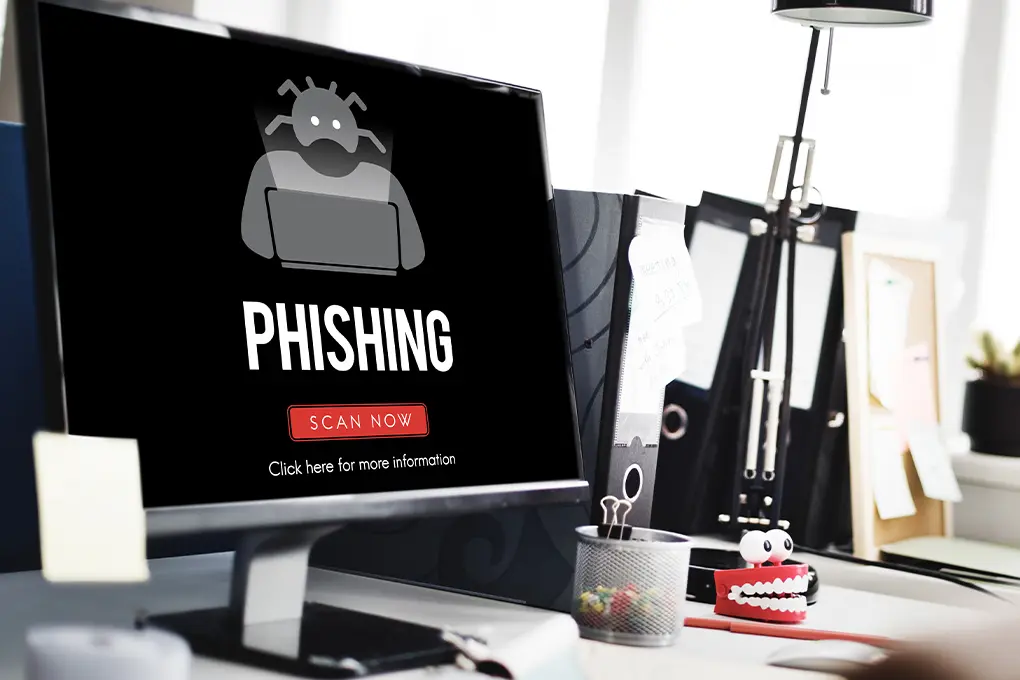That coffee shop Wi-Fi might be convenient, but it could be exposing your personal information to digital eavesdroppers without you realizing it. Public Wi-Fi networks, such as at airports, hotels, or your favorite café, create perfect hunting grounds for cybercriminals looking to intercept sensitive data.
According to recent studies, 79% of people take unnecessary risks when using public Wi-Fi, with one-quarter of surveyed adults reporting a data compromise or cyber attack resulting from using public Wi-Fi.
Staying cautious and following secure Wi-Fi practices while traveling is crucial to protecting your information on the go.
At Batten Cyber, we understand that staying connected while traveling or working remotely is essential. That’s why we’ve created this straightforward guide to help you use public Wi-Fi safely, protecting your digital life no matter where your travels take you.
Read our public Wi-Fi safety tips to keep your data protected.
Contents
Key Takeways
- Public Wi-Fi networks are common but risky, with cybercriminals targeting unsecured connections to steal personal data and compromise devices.
- Following the public Wi-Fi do’s, like using a VPN, verifying networks, enabling 2FA, and keeping software updated, significantly boosts your on-the-go security.
- Avoid the public Wi-Fi don’ts, such as logging into sensitive accounts, leaving devices unattended, or clicking on suspicious pop-ups, which can lead to data theft or malware infections.
- Additional tools like identity protection services, parental controls, and all-in-one security suites can provide extra protection for frequent travelers or remote workers.
- Practicing safe habits on public networks is about informed decisions, not fear. With the right tools and awareness, you can stay connected and protected anywhere.
Public Wi-Fi Security Do’s: Protect Yourself While Connected
Here’s what you need to know for safe use of public Wi-Fi.
✅Do Use a VPN (Virtual Private Network)
Protect your internet traffic from prying eyes.
- A VPN creates an encrypted tunnel for your internet activity, making it nearly impossible for hackers on the same network to intercept your data.
- Even if someone is monitoring the network, encrypted information remains unreadable.
- Modern VPN apps are simple to use and affordable, often costing less than a monthly streaming subscription.
✅Do Verify the Network Name Before Connecting
Ensure you’re connecting to the legitimate network, not a hacker’s trap.
- Cybercriminals often create fake hotspots that mimic legitimate networks (e.g., “Starbucks Free WiFi”).
- Always ask staff for the official network name before connecting.
- Avoid networks without a password in busy public areas to prevent connecting to “evil twin” attacks.
✅Do Enable Two-Factor Authentication (2FA)
Add a critical extra layer of security to your accounts.
- Even if your password is stolen, 2FA prevents unauthorized access without a second verification code.
- Set up 2FA on important accounts like email, banking, social media, and cloud storage.
- Most authentication apps make this process quick and simple.
✅Do Keep Your Software Updated
Patch vulnerabilities before hackers can exploit them.
- Software updates often fix security flaws that attackers target.
- Enable automatic updates for your operating system, browsers, and critical apps.
- Always update your devices before traveling or connecting to unfamiliar networks.
✅Do Use HTTPS Websites Only
Make sure your online interactions are encrypted.
- Look for the padlock icon and “HTTPS” in your browser’s address bar when visiting any site, especially before entering personal information.
- Avoid entering sensitive data on websites that only show “HTTP” without the ‘S’—they aren’t secure.
✅Do Turn Off File Sharing and AirDrop
Minimize exposure to strangers on the same network.
- Disable file sharing, AirDrop, printer sharing, and network discovery settings before connecting to public Wi-Fi.
- On Windows, turn off network discovery and file sharing; on Mac, set AirDrop to “Contacts Only” or disable it entirely.
✅Do Use Antivirus or Endpoint Protection
Add an active defense layer against malware on open networks.Public Wi-Fi can expose you to rogue software.
- Reliable antivirus tools can detect threats, block malicious downloads, and alert you to suspicious activity in real time.
Public Wi-Fi Security Don’ts: Habits to Avoid When Connected
Here are the don’ts to keep in mind to ensure that you’re using secure Wi-Fi in public.
❌Don’t Access Sensitive Accounts
Avoid logging into critical accounts while on public Wi-Fi.
- Refrain from accessing banking, investment, health portals, or government accounts on public networks.
- If necessary, use your cellular data or ensure you’re using a VPN and the official app for extra protection.
- Financial theft risks are too high to justify casual logins over unsecured networks.
❌Don’t Leave Your Devices Unattended
Physical security matters just as much as digital security.
- Never leave your laptop, tablet, or phone unattended, even for a minute.
- Always carry your devices with you or have a trusted person watch them.
- Consider using a privacy screen to guard against “shoulder surfing.”
❌Don’t Automatically Connect to Networks
Control when and where your device connects.
- Disable your phone or laptop’s auto-connect settings for Wi-Fi networks.
- Always manually choose which network to join.
- This prevents accidental connections to malicious or spoofed networks.
❌Don’t Ignore Browser Security Warnings
Browser alerts are there for a reason so take them seriously.
- Never bypass warnings about insecure connections or invalid certificates.
- These alerts can indicate someone is attempting to intercept your data.
- Stay extra cautious when browsing on public networks.
❌Don’t Install Software or Click Unexpected Pop-ups
Stay skeptical of pop-ups and sudden download prompts.
- Fake update notifications are a common attack method on public Wi-Fi.
- Avoid clicking on anything unexpected; wait to install updates until you’re on a trusted network.
- If unsure, switch to your mobile data before proceeding.
❌Don’t Use the Same Password Across Multiple Sites
Password reuse can lead to widespread account compromise.
- Always use unique, complex passwords for each account.
- Consider a password manager to help create and store strong passwords securely.
- Even if one password gets compromised, others will remain safe.
The Do’s and Don’ts of Public Wi-Fi Safety at a Glance
Here’s a quick table showing the do’s and don’ts that you need to know for the safe use of public Wi-Fi.
| Do’s | Don’ts |
| Use a VPN to protect your internet traffic | Don’t access banking or sensitive accounts |
| Verify the correct network name before connecting | Don’t leave your devices unattended |
| Enable 2FA on key accounts like email and banking | Don’t let your device auto-connect to unknown networks |
| Keep all software and apps up to date | Don’t ignore browser security warnings |
| Only browse HTTPS-secured websites | Don’t install software or click on unexpected pop-ups |
| Disable file sharing and AirDrop before connecting | Don’t use the same password across multiple accounts |
| Use antivirus or endpoint protection software | |
| Log out of accounts after use |
Staying Secure Beyond Public Wi-Fi

Public Wi-Fi safety is just one aspect of comprehensive digital security. For travelers and remote workers who regularly use public internet connections, consider these additional protection measures:
Identity Protection Services
A robust identity theft protection service can monitor the dark web for your information and alert you if your data appears in breaches. This early warning system is invaluable for frequent public Wi-Fi users whose information might be exposed without their knowledge.
Parental Controls
For families concerned about online safety while traveling, parental control tools can ensure children don’t accidentally connect to unsecured networks or access inappropriate content while using public Wi-Fi in hotels or restaurants.
All-in-One Security Suites
Remote professionals should consider all-in-one security suites that combine VPN protection with advanced threat monitoring, ensuring both their personal and work data remain secure regardless of connection type.
Take Action to Protect Your Digital Life
Public Wi-Fi networks are an unavoidable part of modern life, especially for travelers and remote workers. By following these do’s and don’ts, you can significantly reduce your risk while staying connected on the go.
Remember that proper cybersecurity is about making informed choices that balance convenience with protection. With the right tools and habits, you can safely leverage public Wi-Fi without putting your digital identity at risk.
Ready to strengthen your online security? Explore Batten Cyber’s trusted marketplace for expert-vetted VPNs and comprehensive security solutions that protect your digital life wherever you connect.
Frequently Asked Questions
Is Using a VPN Enough to Stay Safe on Public Wi-Fi?
A VPN encrypts your data but doesn’t protect against phishing, malware, or rogue networks. It’s essential to combine it with safe browsing habits and device-level protections.
How Can I Tell If a Public Wi-Fi Network Is Fake?
Look for unusual names, duplicate networks, or open connections without passwords. When in doubt, confirm the official network name with staff before connecting.
Are There Any Risks With Using Mobile Hotspots Instead?
While mobile hotspots are generally safer, they can still be vulnerable if not password-protected or if default settings are left unchanged. Use strong encryption and disable auto-connect.
Should I Use a Password Manager on Public Wi-Fi?
Yes. A password manager encrypts your login credentials and autofills only on verified websites, reducing the risk of keylogging or phishing on unsecured networks.
Can Public Wi-Fi Affect My Smart Devices or Wearables?
Yes. Devices like smartwatches, tablets, or even connected e-readers can be exploited on open networks if Bluetooth or Wi-Fi is enabled and unsecured.
Sources
Hidden dangers of public WiFi and how to avoid them
Private data compromised through public Wi-Fi use U.S. 2023| Statista




